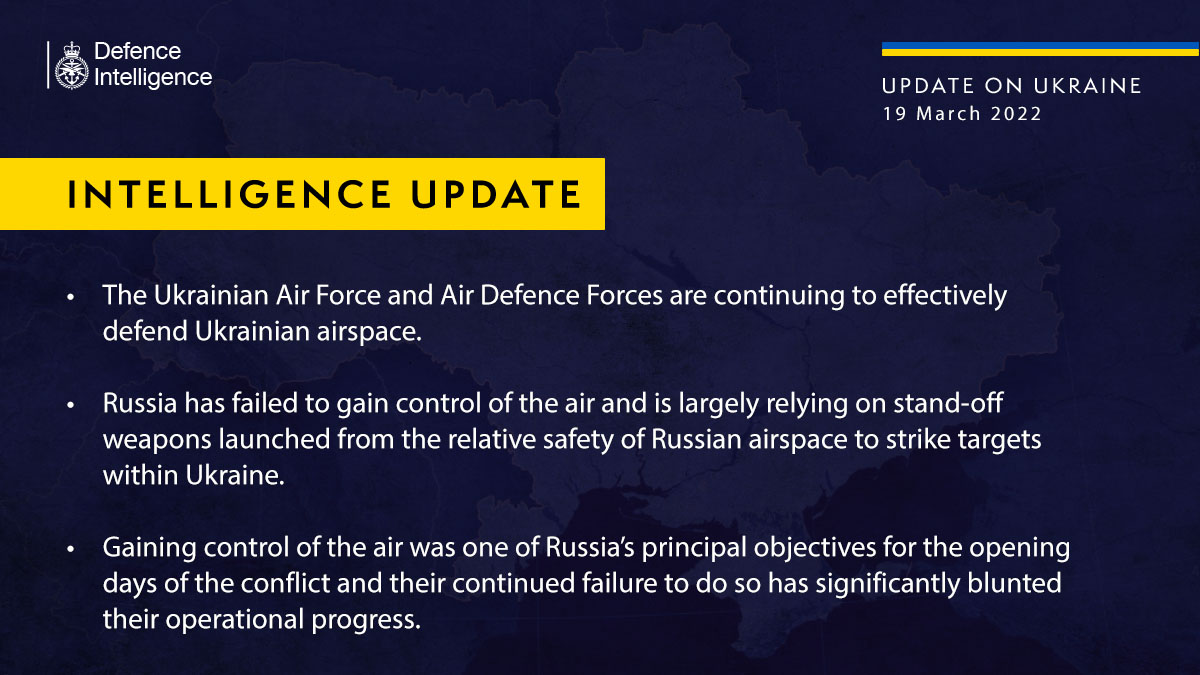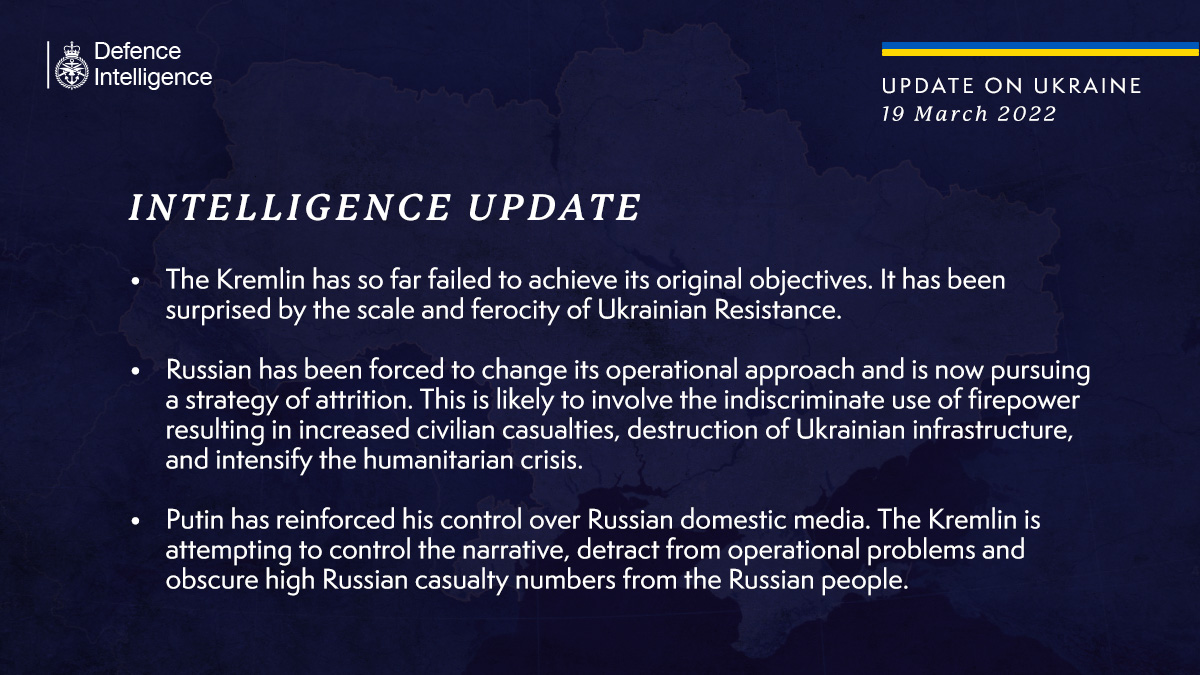
Latest Defence Intelligence update on the situation in Ukraine - 17 March 2022
Find out more about the UK government's response: ow.ly/NIxH50ImfSu
🇺🇦 #StandWithUkraine 🇺🇦
Find out more about the UK government's response: ow.ly/NIxH50ImfSu
🇺🇦 #StandWithUkraine 🇺🇦

(2/4) Logistical problems continue to beset Russia’s faltering invasion of Ukraine.
(3/4) Reluctance to manoeuvre cross-country, lack of control of the air and limited bridging capabilities are preventing Russia from effectively resupplying their forward troops with even basic essentials such as food and fuel.
(4/4) Incessant Ukrainian counterattacks are forcing Russia to divert large number of troops to defend their own supply lines. This is severely limiting Russia’s offensive potential.
• • •
Missing some Tweet in this thread? You can try to
force a refresh









